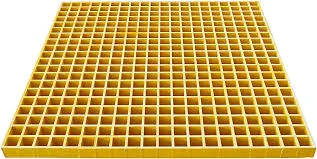
-
 Afrikaans
Afrikaans -
 Albanian
Albanian -
 Amharic
Amharic -
 Arabic
Arabic -
 Armenian
Armenian -
 Azerbaijani
Azerbaijani -
 Basque
Basque -
 Belarusian
Belarusian -
 Bengali
Bengali -
 Bosnian
Bosnian -
 Bulgarian
Bulgarian -
 Catalan
Catalan -
 Cebuano
Cebuano -
 China
China -
 China (Taiwan)
China (Taiwan) -
 Corsican
Corsican -
 Croatian
Croatian -
 Czech
Czech -
 Danish
Danish -
 Dutch
Dutch -
 English
English -
 Esperanto
Esperanto -
 Estonian
Estonian -
 Finnish
Finnish -
 French
French -
 Frisian
Frisian -
 Galician
Galician -
 Georgian
Georgian -
 German
German -
 Greek
Greek -
 Gujarati
Gujarati -
 Haitian Creole
Haitian Creole -
 hausa
hausa -
 hawaiian
hawaiian -
 Hebrew
Hebrew -
 Hindi
Hindi -
 Miao
Miao -
 Hungarian
Hungarian -
 Icelandic
Icelandic -
 igbo
igbo -
 Indonesian
Indonesian -
 irish
irish -
 Italian
Italian -
 Japanese
Japanese -
 Javanese
Javanese -
 Kannada
Kannada -
 kazakh
kazakh -
 Khmer
Khmer -
 Rwandese
Rwandese -
 Korean
Korean -
 Kurdish
Kurdish -
 Kyrgyz
Kyrgyz -
 Lao
Lao -
 Latin
Latin -
 Latvian
Latvian -
 Lithuanian
Lithuanian -
 Luxembourgish
Luxembourgish -
 Macedonian
Macedonian -
 Malgashi
Malgashi -
 Malay
Malay -
 Malayalam
Malayalam -
 Maltese
Maltese -
 Maori
Maori -
 Marathi
Marathi -
 Mongolian
Mongolian -
 Myanmar
Myanmar -
 Nepali
Nepali -
 Norwegian
Norwegian -
 Norwegian
Norwegian -
 Occitan
Occitan -
 Pashto
Pashto -
 Persian
Persian -
 Polish
Polish -
 Portuguese
Portuguese -
 Punjabi
Punjabi -
 Romanian
Romanian -
 Russian
Russian -
 Samoan
Samoan -
 Scottish Gaelic
Scottish Gaelic -
 Serbian
Serbian -
 Sesotho
Sesotho -
 Shona
Shona -
 Sindhi
Sindhi -
 Sinhala
Sinhala -
 Slovak
Slovak -
 Slovenian
Slovenian -
 Somali
Somali -
 Spanish
Spanish -
 Sundanese
Sundanese -
 Swahili
Swahili -
 Swedish
Swedish -
 Tagalog
Tagalog -
 Tajik
Tajik -
 Tamil
Tamil -
 Tatar
Tatar -
 Telugu
Telugu -
 Thai
Thai -
 Turkish
Turkish -
 Turkmen
Turkmen -
 Ukrainian
Ukrainian -
 Urdu
Urdu -
 Uighur
Uighur -
 Uzbek
Uzbek -
 Vietnamese
Vietnamese -
 Welsh
Welsh -
 Bantu
Bantu -
 Yiddish
Yiddish -
 Yoruba
Yoruba -
 Zulu
Zulu
GRP Tubes and Connectors for Maritime Construction Projects
GRP Pipes and Fittings for Shipbuilding An Overview
In the modern era of shipbuilding, material selection plays a critical role in ensuring the longevity, efficiency, and safety of maritime vessels. Among the various materials utilized, Glass Reinforced Plastic (GRP) has gained significant prominence due to its unique properties and advantages over traditional materials such as steel and wood. This article delves into the characteristics, benefits, and applications of GRP pipes and fittings in the shipbuilding industry.
What is GRP?
Glass Reinforced Plastic, commonly known as fiberglass, is a composite material that combines plastic with glass fibers. This combination results in a material that is not only lightweight but also exceptionally strong and resistant to corrosion. The versatility of GRP makes it ideal for a wide range of applications, including the manufacturing of pipes and fittings used in shipbuilding.
Key Advantages of GRP Pipes and Fittings
1. Corrosion Resistance One of the most significant advantages of GRP is its outstanding resistance to corrosion. In the marine environment, ships are continually exposed to saltwater and other corrosive substances. GRP pipes and fittings do not rust or corrode, thereby enhancing the lifespan of onboard systems.
2. Lightweight GRP is considerably lighter than traditional materials like steel. This reduced weight translates into lower overall vessel weight, which can enhance fuel efficiency and overall performance. Furthermore, lighter materials can simplify installation and reduce labor costs.
3. Strength and Durability Despite being lightweight, GRP possesses remarkable tensile strength. This durability makes GRP pipes an excellent choice for high-stress environments often encountered in marine applications. The ability to withstand high pressures ensures that these materials can function reliably under demanding conditions.
grp pipes and fittings for ship building

4. Thermal Insulation GRP exhibits low thermal conductivity, which is beneficial for maintaining temperature in various piping systems. This property is especially useful for systems that require temperature control, such as those used in cooling or heating processes onboard.
5. Ease of Fabrication GRP can be manufactured into various shapes and sizes, making it highly adaptable for different shipbuilding needs. The ease of customization allows shipbuilders to design complex systems without the limitations often encountered with metal piping.
6. Cost-Effectiveness Although the initial investment for GRP pipes may be comparable to or higher than traditional materials, the long-term savings in maintenance, operational efficiency, and longevity often outweigh the costs. The reduced need for replacements and repairs further adds to its cost-effectiveness.
Applications in Shipbuilding
GRP pipes and fittings are utilized in a variety of systems within a ship, including
- Water and Waste Systems GRP is commonly used for fresh water and sewage systems due to its corrosion resistance and longevity. - Cooling Systems In mechanical and electrical areas of ships, GRP pipes are essential for cooling water circulation, ensuring that critical systems operate within safe temperature ranges. - Fuel Systems The lightweight nature of GRP allows for the safe transport of fuel throughout the ship without the risk of contamination through corrosion. - Fire-Fighting Systems The durability and reliability of GRP make it suitable for use in firefighting systems, which require dependable performance under high-pressure conditions.
Conclusion
In conclusion, the incorporation of GRP pipes and fittings into shipbuilding signifies a meaningful advancement in material technology. With their lightweight nature, corrosion resistance, and overall durability, GRP components provide shipbuilders with innovative solutions that enhance vessel performance and longevity. As the maritime industry continues to evolve, the demand for such advanced materials is likely to grow, paving the way for safer and more efficient ships. Whether used for water systems, cooling mechanisms, or fire-fighting infrastructure, GRP will undoubtedly remain a staple in modern shipbuilding, shaping the future of maritime engineering.









